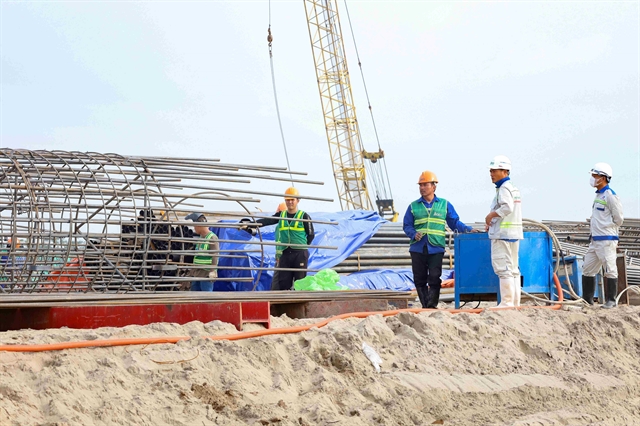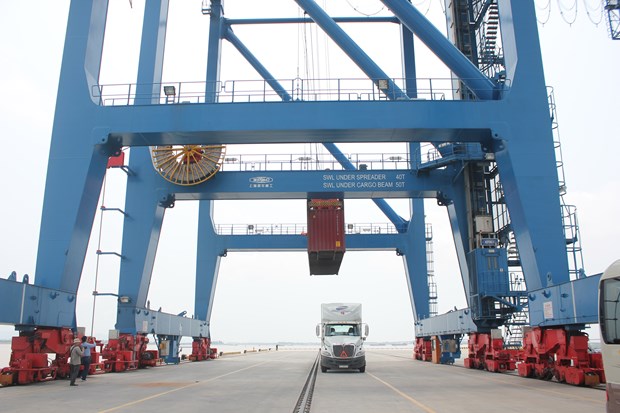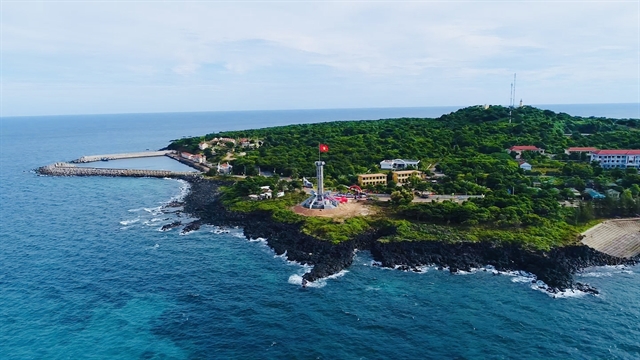 Economy
Economy


|
| A truck is being loaded up at a southern port in Việt Nam. VNA/VNS Photo |
HÀ NỘI — Logistics remain a key factor in Việt Nam's ability to capitalise on the benefits of the EU–Vietnam Free Trade Agreement (EVFTA), said experts and policymakers.
Two years since the FTA went into effect, the Southeast Asian economy has still been struggling to overcome the shortcomings and limitations of its logistics infrastructures, said industry experts.
Việt Nam's import-export turnover was recorded at over US$700 billion in the year 2021. The country has managed to top all ASEAN economies in trade with the EU with key commodities including textile, footwear and seafood, all of which were made possible with the development of the logistics industry.
Improved trade ties with the EU have allowed Vietnamese logistics firms access to modern EU logistics technologies, increased exchanges of expertise with EU partners and opportunities to join the EU's logistics value chain.
Mai Trần Thuật, director in charge of supply chain solutions from Bee Logistics Group, said there have been more investments by EU firms in the industry since the signing of the EVFTA, even amid the pandemic.
"Our company has been in constant talks with major players in the industry to increase our presence in the EU market," he said.
Ngô Chung Khanh, deputy head of the Multilateral Trade Policy Department under the Ministry of Industry and Trade (MoIT), said along with opportunities Vietnamese firms must also face a number of challenges since the EVFTA went into effect.
The biggest threat, according to Khanh, is the EU logistics industry entering Việt Nam in full force. There is a real possibility that Vietnamese firms may lose their home turf to EU firms if they failed to modernise and improve.
"A major weakness among Vietnamese firms is the lack of capital, technology and high-skilled labour force," he said.
Taking control of the industry is crucial to Vietnamese commodities' ability to stay competitive in the international market, according to Lê Hoàng Khánh Nhựt, CEO of Rubber Joint Stock Company Đà Nẵng.
He said logistics costs amount to a large part of the industry's input and output. During the pandemic, there were times in which logistics costs skyrocketed (as much as ten times in some instances), creating huge challenges for the company's balance sheet.
In addition, his company must spend more to meet quality and safety demands set by EU standards.
Thuật from Bee Logistics Group was optimistic about Vietnamese firms' prospects in the future. However, he stressed the importance of preparation, long-term planning, capital, technology and training.
On a national scale, Việt Nam should give priority to the building of major logistics hubs along the coast to first meet the demand of its sea-bound trade. In the long run, the country must support the development of its ship-building industry and large logistics companies, according to Trần Thanh Hải, deputy head of the import-export department under MoIT.
"Technologies is the key to transform the industry, to improve efficiency and competitive capacity," he said.
According to Hải, MoIT has been working on a long-term strategic development plan for the industry which aims at providing greater support to Vietnamese logistics firms and boosting exports. — VNS

.jpg)

.jpg)
